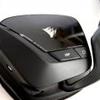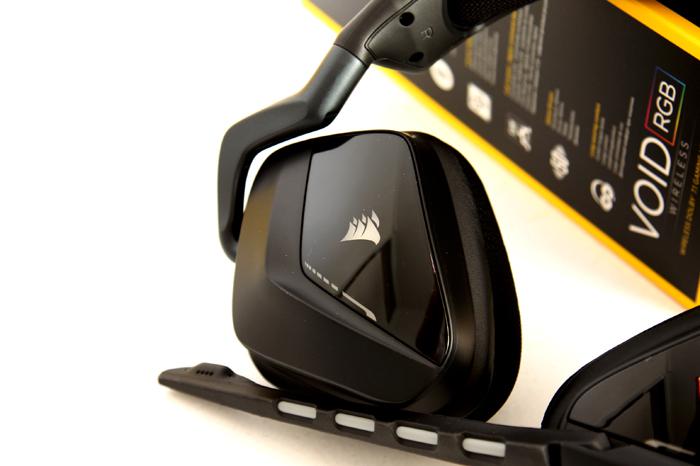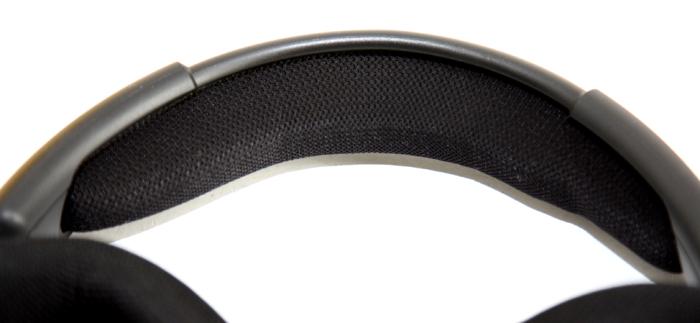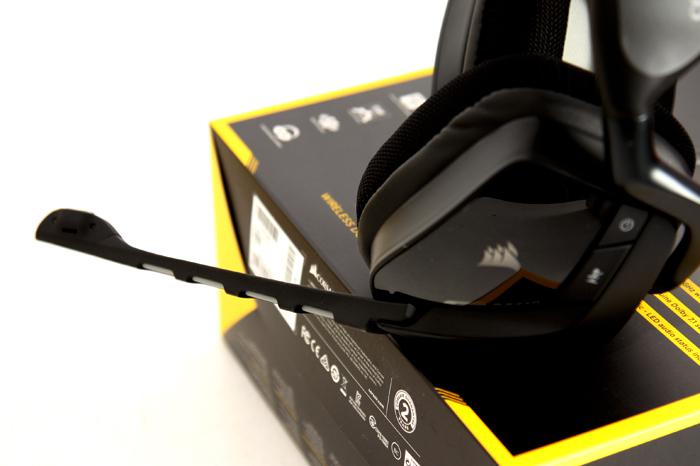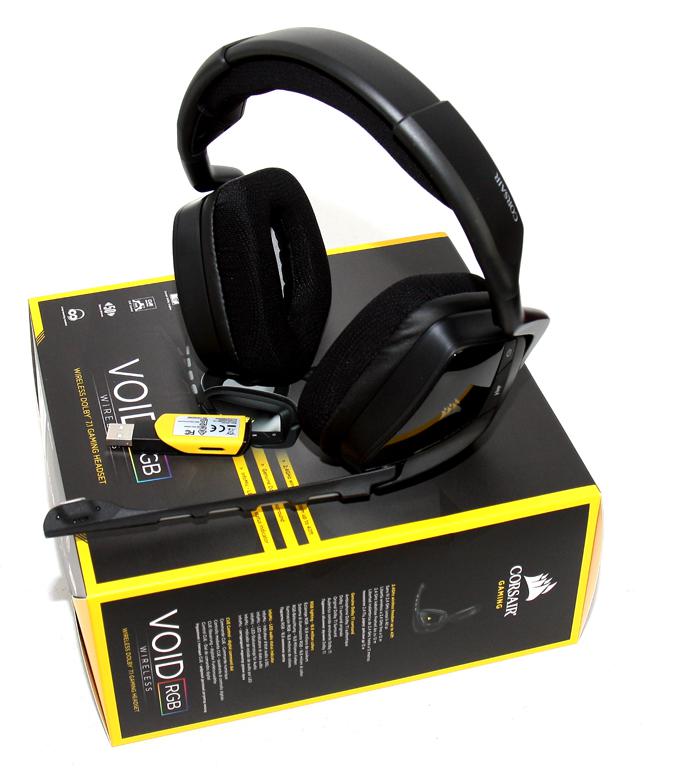Showcase
The VOID RGB comes with two big 50mm neodyne drivers which deliver a decent volume with very little distortion in bass (if you keep things relatively normal).
The ear-cups on the VOID are big and padded similar to the H2100 yet with a different design. Overall, wearing the cups is very comfortable, in fact much better opposed to the previous designs.
You can see a power switch, pressing it for two seconds will enable/disable the device (it also powers off automatically after a while of inactivity to preserve power). There's a mute button for the MIC and below it you'll see a charge port connector and, a little hard to see, a dial. By pressing it you can configure sound modes and volume levels. A series of LEDs at the end of the MIC / boomstick will give a visual representation of what you selected. Corsair calls this InfoMIC as it shows info on in-game audio: EQ settings, Dolby, microphone mute status, and battery life – all visually communicated via the LED indicators next to the microphone.
The headband is improved, feels softer and very comfortable. Subtle and heavily padded would be the choice of words here. Differences over previous generations can be found in the design of the headband, whose hinges/swivel points have been redesigned to be much more hard-wearing. The ear cups can be rotated so they'll adjust themselves perfectly to the shape of your head or less normal shaped head.
The boom microphone thankfully rotates away up and down, but isn't adjustable other than that. The MIC is noise-cancelling, and we'll talk to it and about that as well later on. It also holds the InfoMic LEDs at the inner side of the tip.
Typically we do have a slight aversion to the USB chips in headsets. We feel they hurt sound more than they should, but Corsair knows this and is using higher quality USB chips in their headsets. The VOID we assume uses a C-Media implementation. If it is the IC used then that is good, the C-Media CM6302 is a compelling audio chip; up to 16-bit, in 44.1 KHz or 48 KHz sample rates, DAC for output, and 16-bit, 44.1 KHz and 48 KHz ADC (analog-to-digital conversion) for the microphone. This chip also integrates a DSP that enables Dolby Digital technologies. Overall the headset is stylish, simple, even elegant in a minimalist sort of way.
